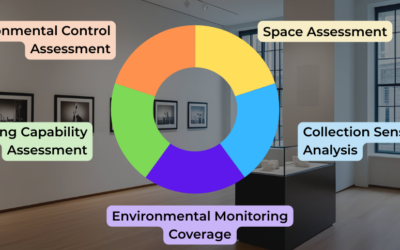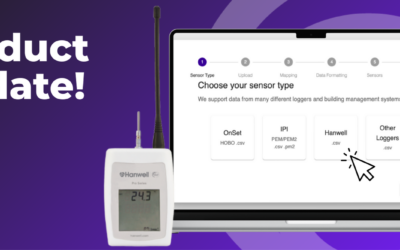Technology in libraries is not a new phenomenon. Libraries are always experimenting with and adopting new technologies for the benefit of their patrons. From installing electric lights in the 19th century all the way through providing microfiche machines, to computer stations with internet and new digitizing equipment, libraries are constantly evolving with the times. However, in recent years, the pace and scope of technological innovation have increased dramatically, creating new opportunities and challenges for both libraries and their users.
In this blog post, we will explore how technology in libraries is evolving with data, IoT, and AI, and what this means for collections care professionals who are interested in caring for archives and library contents. We will look at some of the current trends and examples of how libraries are using these technologies to enhance their services, collections, and user experience.
Data: The Fuel of Library Innovation
Data is everywhere, and libraries are no exception. Libraries collect, store, analyze, and share data for various purposes, such as improving their operations, understanding their users’ needs and preferences, enhancing their collections, and demonstrating their impact.
One of the ways that libraries are using data is to create digital collections that are more accessible, discoverable, and engaging. For example, the Library of Congress has launched a crowdsourcing platform called By the People, where volunteers from around the world can transcribe, tag, and review historical documents from the library’s collections. This helps the library to make its collections more searchable and readable, while also involving the public in the preservation and interpretation of history. Think about all the hours of transcribing images in photographs for metadata that will be saved for the registration staff!
IoT: The Network of Library Things
IoT stands for Internet of Things, which refers to the interconnection of physical objects with the internet, enabling them to communicate with each other and with users. IoT has many applications in various sectors, including museums and libraries.
One of the ways that libraries are using IoT is to automate and streamline their workflows and processes. For example, RFID (radio-frequency identification) tags are attached to library items to enable faster and easier check-in, check-out, inventory, and security. RFID also allows users to locate items on shelves using mobile devices or interactive maps.
Another way that libraries are using IoT to monitor patron usage of different types of spaces. Are they using the furniture? How does noise impact their behavior? How do patrons move around the library? Are patrons using smart floors and tables? How can this information be used to design and redesign library spaces?
Finally, IoT devices may help lead an institution to reduce its energy consumption by providing accurate, real-time data about its environmental controls as they relate to human comfort and collection safety. If you would like to learn more about active environmental monitoring, reach out to us or explore the Conserv Community, where different heritage professionals exchange information about monitoring and decision-making for preventative conservation measures.
AI: The Intelligence of Library Services
AI stands for Artificial Intelligence, which refers to the simulation of human intelligence by machines or software. With the recent advent of ChatGPT and many other programs which challenge our expectations of what technology can and can’t do for us, many professionals in the heritage industries have begun to wonder how we can leverage this latest technology to improve our workflows and services.
One of the ways that libraries may harness the power of AI is to include AI elements into already existing services and tools such as recognizing outliers in data related to visitation volumes for budgeting and operational planning purposes. You can read more about the suggested uses for AI in libraries in the Urban Libraries Council Leadership Brief about Generative AI for Library Systems released in October 2023.
Conclusions
Technology in libraries is evolving rapidly with data, IoT, and AI. These new and rapidly evolving technologies can offer many benefits for collections care professionals who are interested in caring for archives and library contents. Together, they can help libraries improve their efficiency, content quality, accessibility, discoverability, and impact of their services and collections. They can also help libraries create new opportunities for user engagement, learning, and collaboration.
However, we must not forget that new technologies also come with new challenges and risks. RFID may pose concerns related to the collection of private patron information. Some may be worried about certain AI capabilities impacting job descriptions or even the number of positions available. The new technology must be harnessed sustainably and thoughtfully.
Libraries of all sizes and budgets will need to be strategic and responsible in adopting and adapting to these technologies and ensure that they align with their particular mission and values.
If you have any questions about environmental monitoring, integrated pest management, or just want to talk about preventative conservation, please reach out to us! Don’t forget to check out our blog or join our community of collections care professionals where you can discuss hot topics, connect with your peers or even take a course to get familiar with the Conserv platform.




